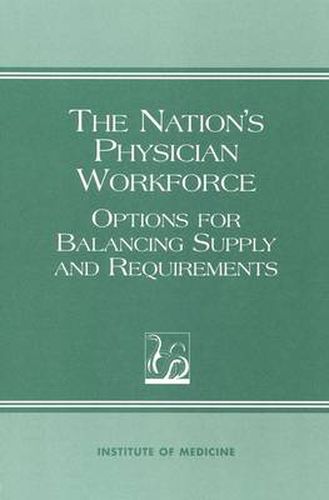Readings Newsletter
Become a Readings Member to make your shopping experience even easier.
Sign in or sign up for free!
You’re not far away from qualifying for FREE standard shipping within Australia
You’ve qualified for FREE standard shipping within Australia
The cart is loading…






Enormous changes are occurring in the organization and financing of the U.S. health care system-rapid changes that are being driven by market forces rather than by government initiatives. Although it is difficult to predict what they system will look like once it begins to stabilize, the changes will affect all components of the health care workforce, and the numbers and types of health care professionals that will be needed in the future-as well as the roles they will fill-will surely be much different than they were in the past. Despite numerous studies in the past 15 years showing that we might have more doctors than we need, the number of physicians in residency training continues to grow. At the same time, there is evidence that the demand for physician services will decrease as a result of growth of managed care. All of this is evidence that the demand for physician services will decrease as a result of growth of managed care. All of this is taking place at a time when, coincident with the result of failure of comprehensive health care reform, there is no coordinated and widely accepted physician workforce policy in the United States. The present study examines the following three questions: Is there a physician policy in the United States? If there a surplus, what is its likely impact on the cost, quality, and access to health care and on the efficient use of human resources? What realistic steps can be taken to deal with a physician surplus?
$9.00 standard shipping within Australia
FREE standard shipping within Australia for orders over $100.00
Express & International shipping calculated at checkout
Enormous changes are occurring in the organization and financing of the U.S. health care system-rapid changes that are being driven by market forces rather than by government initiatives. Although it is difficult to predict what they system will look like once it begins to stabilize, the changes will affect all components of the health care workforce, and the numbers and types of health care professionals that will be needed in the future-as well as the roles they will fill-will surely be much different than they were in the past. Despite numerous studies in the past 15 years showing that we might have more doctors than we need, the number of physicians in residency training continues to grow. At the same time, there is evidence that the demand for physician services will decrease as a result of growth of managed care. All of this is evidence that the demand for physician services will decrease as a result of growth of managed care. All of this is taking place at a time when, coincident with the result of failure of comprehensive health care reform, there is no coordinated and widely accepted physician workforce policy in the United States. The present study examines the following three questions: Is there a physician policy in the United States? If there a surplus, what is its likely impact on the cost, quality, and access to health care and on the efficient use of human resources? What realistic steps can be taken to deal with a physician surplus?